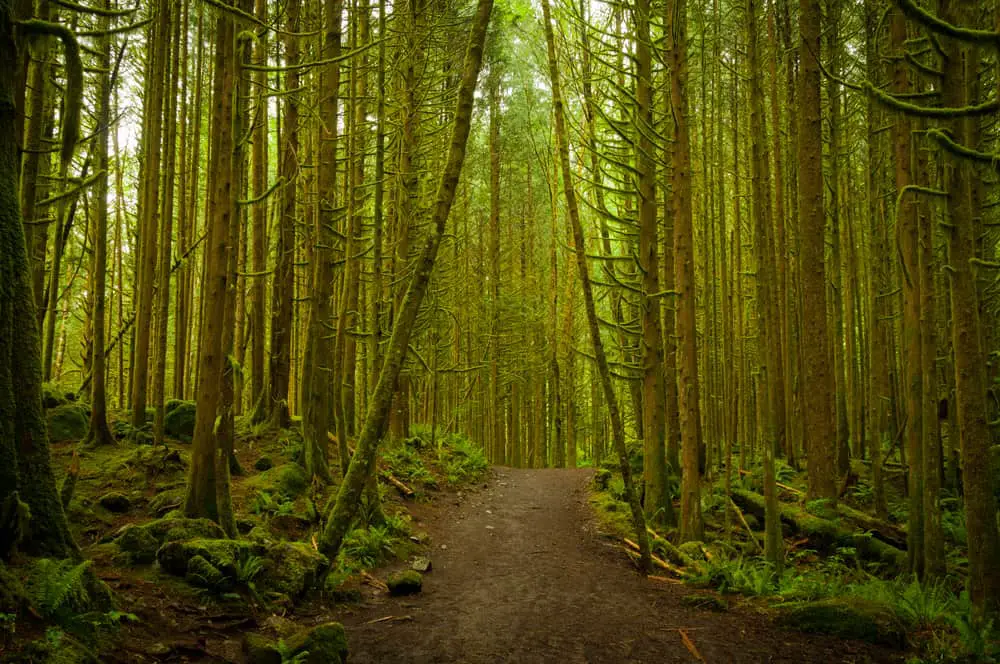
Within British Columbia, there are several distinct forest types that hundreds of rare plants and animals call home. Along the coast, it is possible to find a coastal forest and even the rare temperate rainforest. Deeper into the interior and to the north, visitors will find dense boreal forests which populate much of Canada.
Common trees throughout British Columbia include the spruce and lodgepole pine, though further south and in the rainforest, red cedars remain prominent. While much of the boreal forest is densely populated, there is a range of elevations and topography types throughout the coastal forests ranging from valleys, mountains, and coastal wetland areas.
Table of Contents
Types of Forests in British Columbia
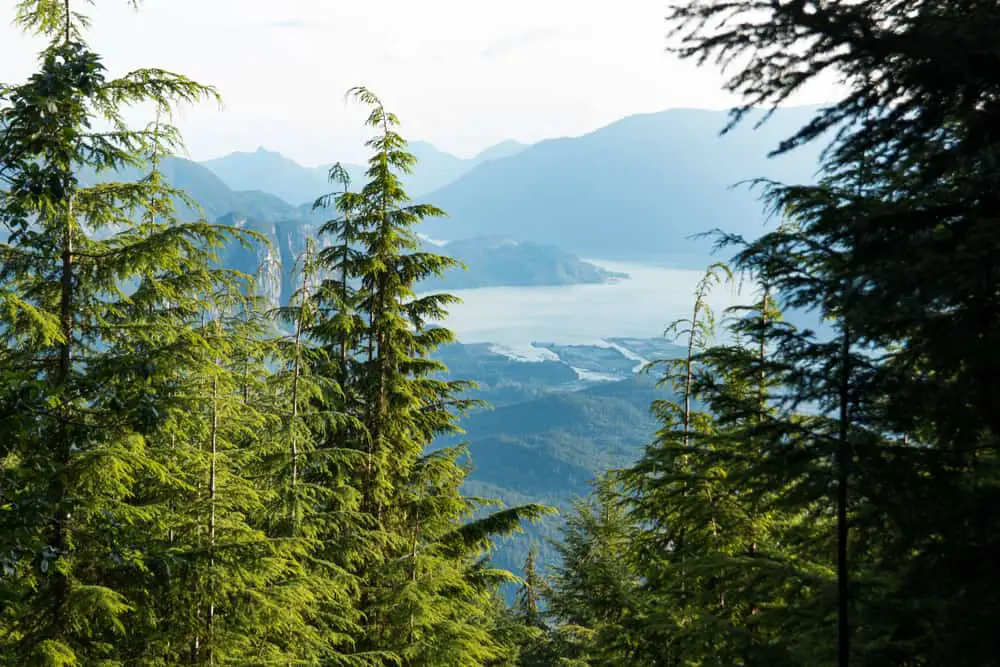
British Columbia is the far western province of Canada sandwiched between Washington state to the south and the Arctic to the north. This area is known for its densely populated forests that are home to countless animals and plants.
Although most forest in this area is categorized as the boreal forest, the rare coastal forest and temperate rainforest give this part of the world a unique and exciting ecozone that cannot be compared to anywhere else in the world. Below, let’s take a closer look at British Columbia’s forests to appreciate better the vast diversity these forests can offer.
Coastal Forest
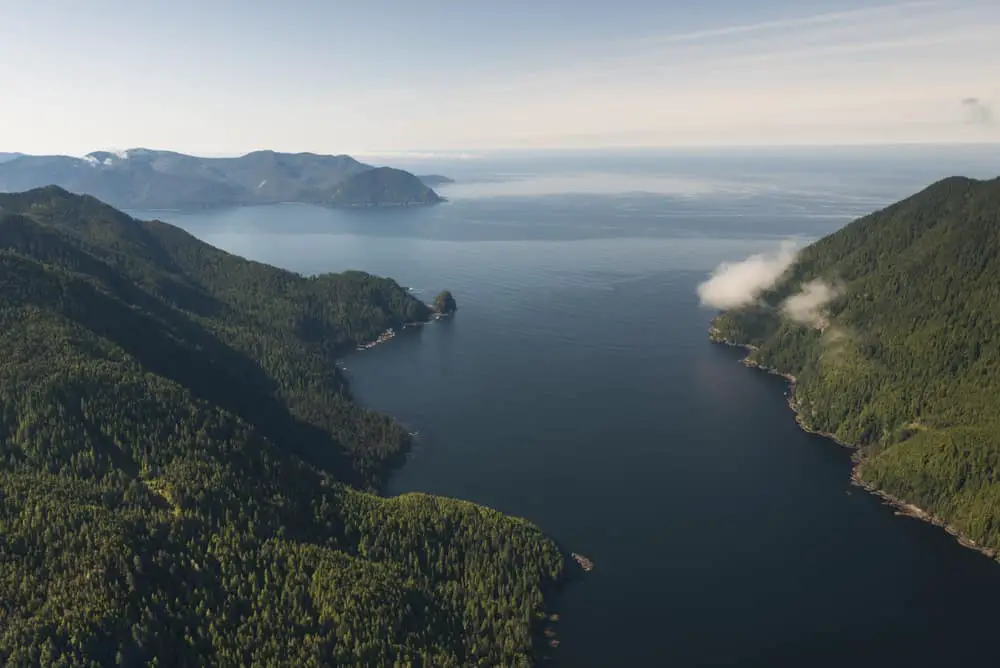
Located along the Pacific Ocean, British Columbia is home to some incredible coastal forest areas. Stretching 150 km down the coast of western Canada, visitors will find a range of tree species and several animals that can only be found in this part of the area. The coastal forests extend from the Cascade Range in northern Washington into Canada.
They include parts of the Nass Ranges and the Nass River and include parts of Olympic Mountain and Olympic Peninsula. While most trees are coniferous in a densely packed forested area, it is also possible to find lowland areas with fjords, valleys, and inlets.
Compared to other parts of the forest, this coastal forest is usually drier than inland forests. The coastal forest is mainly coniferous, although there are some deciduous trees spotted throughout this temperate forest. Visitors will be able to find red cedar trees, hemlocks, and Douglas fir trees.
The coastal forests in British Columbia have some of the rarest plants and animals in the world, making them extremely vulnerable. Luckily, much of the area is protected, and the forest is about 40% of its original size. Ongoing preservation efforts are in place to maintain much of this area’s flora and fauna.
The majority of the coastal forest is in some type of national park or wildlife area. The rare Kermode bear calls this part of the world home. The Kermode bear is a black bear with a rare recessive gene that causes 10% of the cubs to have a white coat. Grizzly bears, moose, black bears, caribou, grey wolf, and fox can also be found in the coastal forests of British Columbia.
Boreal Forest
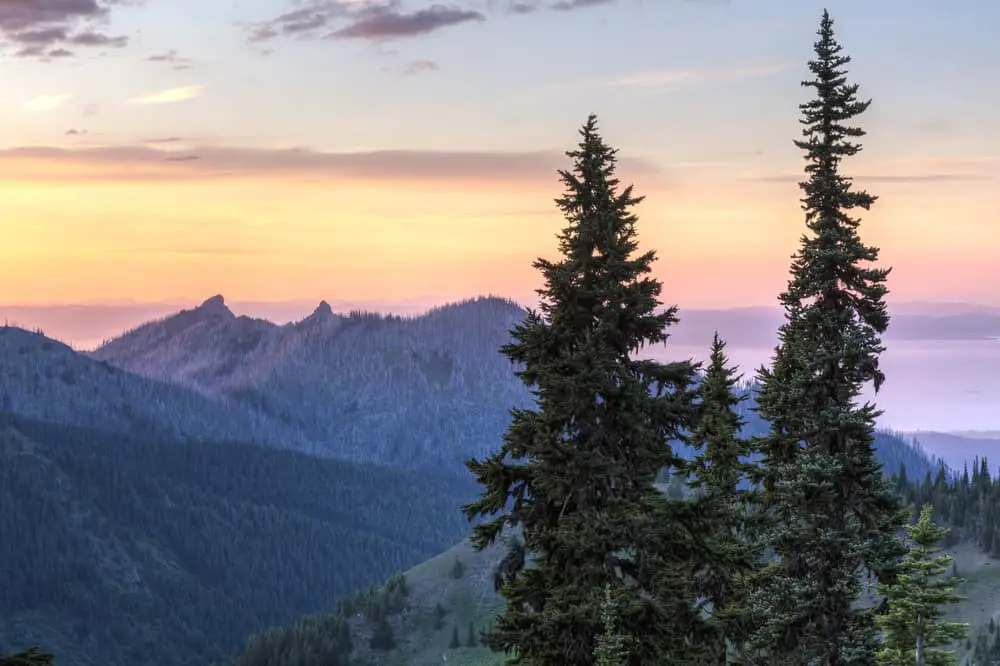
Much of Canada has boreal forest land, and British Columbia is no different. This type of forest covers over 38 million acres in British Columbia. A boreal forest is defined by mostly coniferous trees that can withstand difficult and harsh winter conditions.
The trees commonly found in a boreal forest can withstand long periods of drought and freezing temperatures. Compared to broadleaf trees, coniferous trees have needles. The needles will stay in place for the entire year rather than shed their leaves once per season.
These “evergreen” trees retain their color throughout the year and often will have cones rather than flowers to populate.
The boreal forest is home to many tree species, including white spruce, Engelmann spruce, and lodgepole pines. Black spruce can also be found but are usually much further in the northeastern part of the province. Several animals make the boreal forest their home.
More than 85 different species of animal life in the boreal forests in British Columbia, including grizzly bears, black bears, wolves, moose, bison, and elk. Smaller mammals like beavers and snowshoe hares also call this part of the world home. Several migratory birds can be found in the boreal forest.
Rainforest
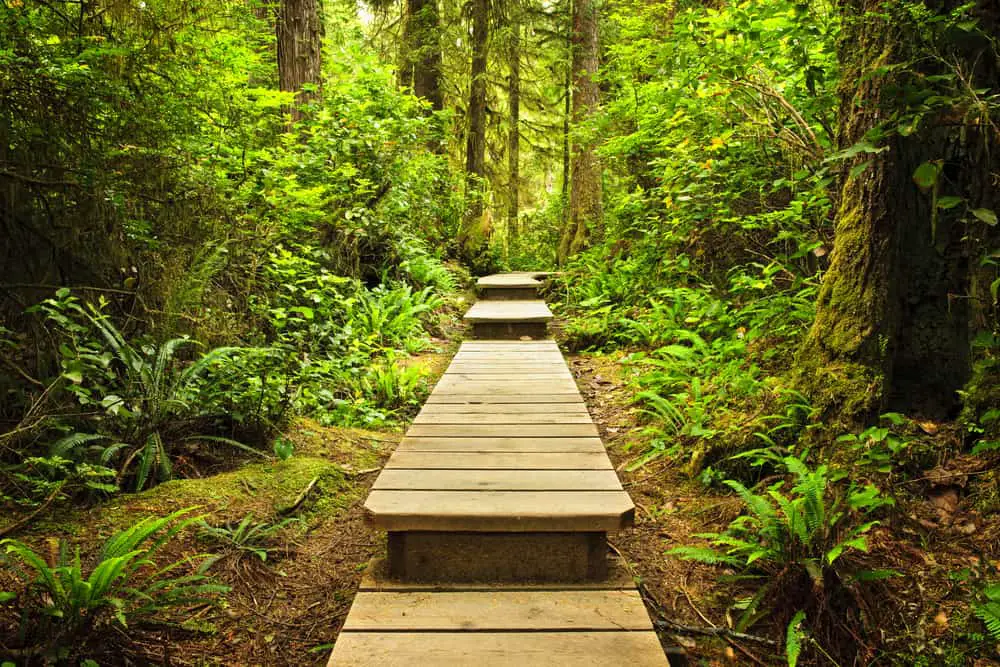
It may shock some people to learn that British Columbia is home to a rainforest. In fact, British Columbia has the largest coastal temperate rainforest in the entire world. Although many people associate a rainforest with the tropics, it is quite possible to have a rainforest in colder climates and more northern locations.
To qualify as a rainforest, an area of the forest only needs to receive a minimum of 60 inches of rain each year. The inland temperate rainforest in British Columbia gets a whopping 150 inches of rain every year.
Located on the Pacific coast, the coastal rainforest stretches from Haida Gwaii to Stanley Park. The rainforest is comprised of over 6.4 million hectares of protected forested area. Several ancient trees rely on abundant moisture within this area of old-growth forest to keep them healthy.
Many of the trees in this rainforest are near 2,000 years old. Common tree species in this ancient forest include Sitka spruce and common western red cedar. This old forest area is also home to several animals, including grizzly bears, salmon, and a black bear population with a rare recessive gene that causes the fur to look white.
Luckily, conservation efforts are underway to protect the animals and vegetation found within this forest region. Although the forest industry is quite profitable, producing large amounts of valuable timber, 85% of the old trees within this area remain protected, especially from old-growth logging.
FAQs
Understanding the different forest types through British Columbia can be challenging, especially given the diverse topography and geographical locations throughout this Canadian province.
To better help you understand Canada’s forests, we have put together a list of commonly asked questions related to the different types of forests found in British Columbia.
What type of forest is Vancouver?
Vancouver is in the southernmost region of British Columbia and is located close to the coast. Much of the forest found in this populous city is considered a temperate rainforest. Vancouver Island, located just off the coast, is home to some of the most varied and dense temperate rainforest environments.
Where is Canada’s boreal forest?
Boreal forests usually consist of thick coniferous trees that are designed to withstand brutal winters and cold temperatures. Many of the boreal forests can be found in the northern regions of Canada. The uppermost portions of British Columbia contain the most extensive sections of the boreal forest.
What are the best places for forests in British Columbia?
The best places to see forests in British Columbia really depends on the type of forest and wildlife you want to see, as well as how far you are willing to travel. For those close to Vancouver, a quick trip to Vancouver Island will have plenty of bio-diversity in this coastal rainforest environment.
Taking a more adventurous trip up the coast will take visitors to the Great Bear Rainforest, which features some densely populated forests filled with ancient trees. Even further north, adventurers can visit the boreal forests to the north.
